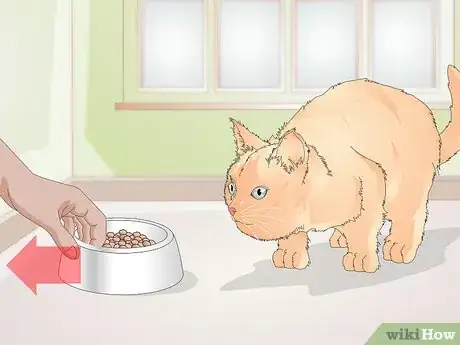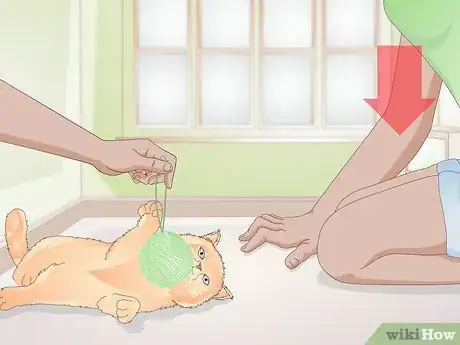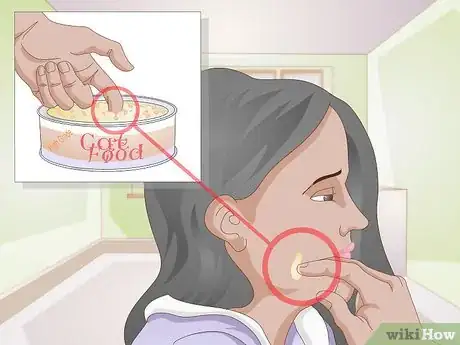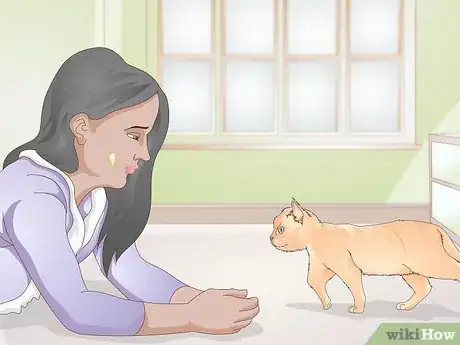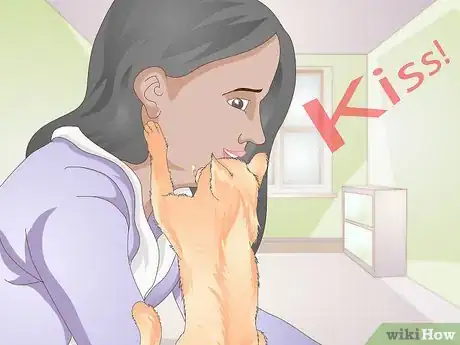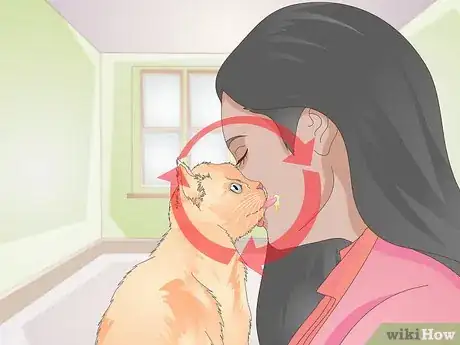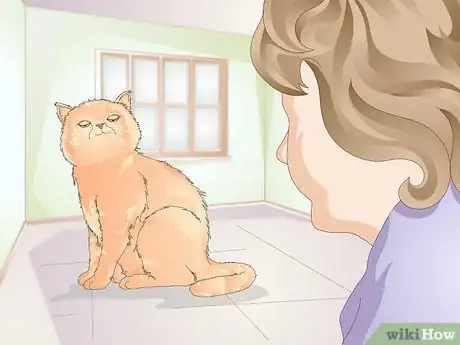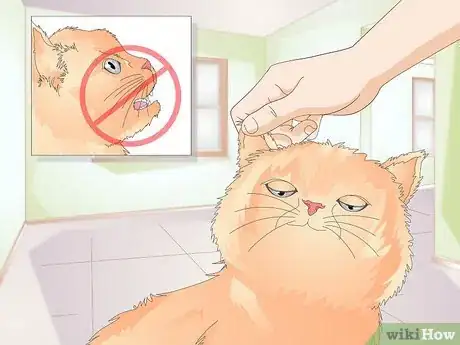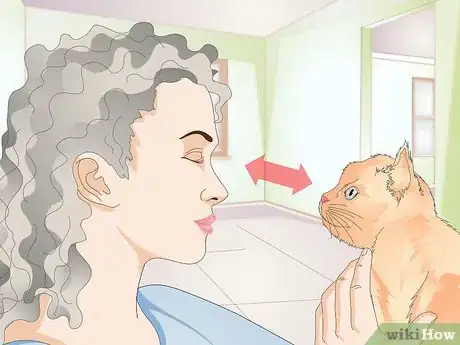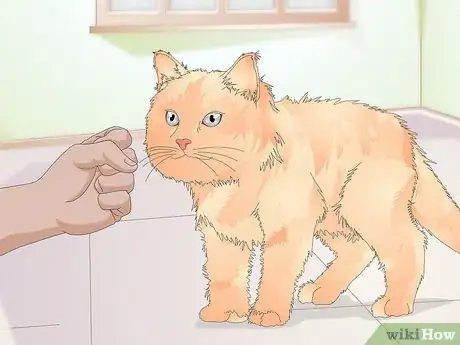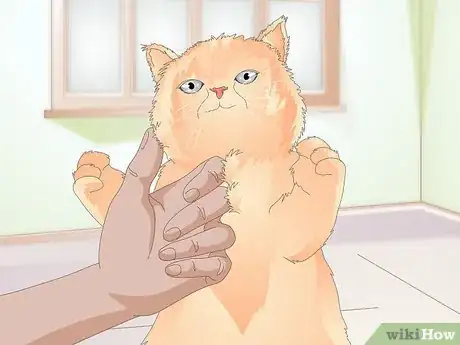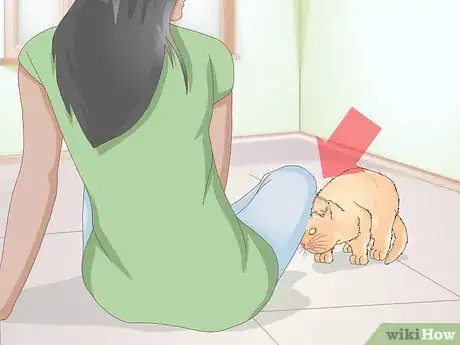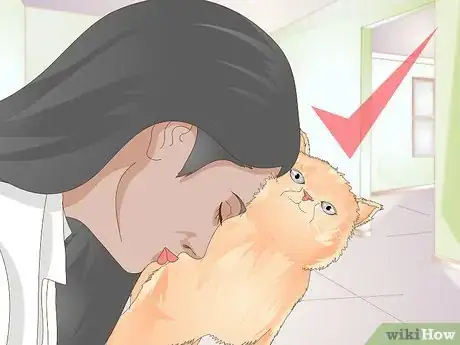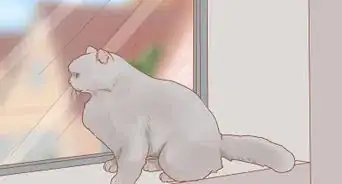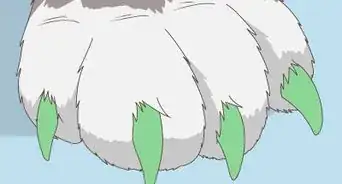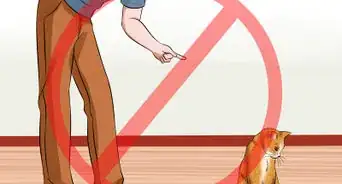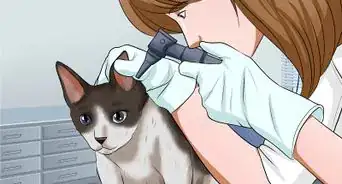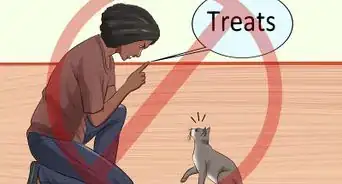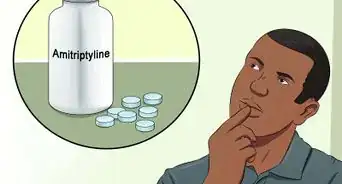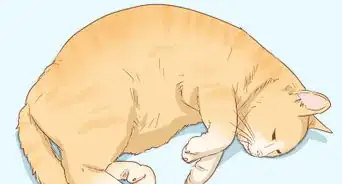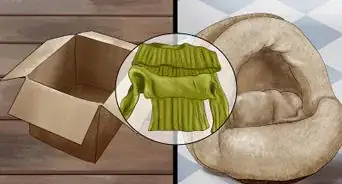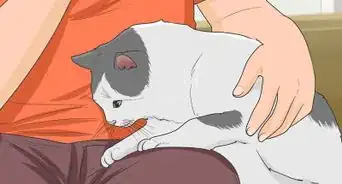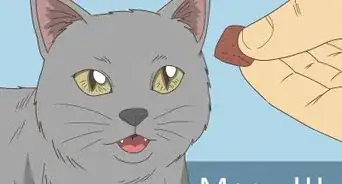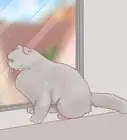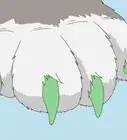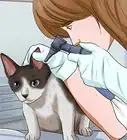This article was co-authored by Brian Bourquin, DVM. Brian Bourquin, better known as “Dr. B” to his clients, is a Veterinarian and the Owner of Boston Veterinary Clinic, a pet health care and veterinary clinic with three locations, South End/Bay Village, the Seaport, and Brookline, Massachusetts. Boston Veterinary Clinic specializes in primary veterinary care, including wellness and preventative care, sick and emergency care, soft-tissue surgery, dentistry. The clinic also provides specialty services in behavior, nutrition, and alternative pain management therapies using acupuncture, and therapeutic laser treatments. Boston Veterinary Clinic is an AAHA (American Animal Hospital Association) accredited hospital and Boston’s first Fear Free Certified Clinic. Brian has over 19 years of veterinary experience and earned his Doctor of Veterinary Medicine from Cornell University.
There are 8 references cited in this article, which can be found at the bottom of the page.
This article has been viewed 37,328 times.
Cats are affectionate, trusting pets, and once a loving relationship has been established, your cat will be demonstrative towards you. Your cat will show affection through a variety of means, most commonly through allowing you to pet it, slowly blinking its eyes at you, and lightly bunting (rubbing or butting its head against you).[1] Although cats are notoriously difficult to train, you can encourage your cat to show you affection if you know which gestures and signals to look for.
Steps
Training your Cat to Kiss Your Face
-
1Make sure your cat is hungry. This method works best if your cat has an appetite when you begin training. Your cat should be hungry, but not starving, during this training session.
- To accomplish this, train your cat during its typical meal time.
- You should never starve or withhold food from your cat.
-
2Ask a friend to sit a few feet away from the cat. Your cat should also be in the same room, and attentive to your friend. This method will not work if your cat is too far away, in another room, or ignoring you or your friend.
- Try playing with your cat (using a cat toy or yarn) while your friend sits down on the floor a few feet away.
Advertisement -
3Apply some cat food on your friend's cheek. You do not need to apply a large amount of food. Just dip your finger into a jar of wet cat food and smear a little on your friend's cheek.[2]
- If you prefer not to put cat food on your face, you can also use cream cheese.
- Make sure your cat is aware of the food nearby. You could even hold the cat near your friend, so the cat knows there is food present.
- Put the can of food away, so your cat will not be tempted to eat that instead.
-
4Let the cat go to your friend. This should be a natural response for the cat. If the cat is hungry, it will attempt to eat the nearby food. It will remember the food and head straight to your friend's cheek and start licking!
-
5Say the command “Kiss!” You should time this so that the cat is “kissing” (licking) your friend's face at the same time that you give the “kiss” command. [3] After you say the word “kiss,” while your cat is still licking your friend's face, give your cat another treat, praise it verbally, and pet its fur.
- Your cat will come to associate your praise with following the “kiss” command.
-
6Repeat this process a number of times. Gradually reduce the amount of food you apply on your friend's cheek, but continue to say the word “kiss” while your cat licks the food from your friend's cheek.
- Eventually, the cat will start responding to the command and kiss without the treat.[4]
Showing Affection through Slowly Blinking
-
1Recognize your cat's affection. Cats do not physically “kiss” one another with their mouths to show affection, as people do. Rather, cats show love and affection through facial movements. Specifically, your cat will look at you and slowly blink its eyes.[5]
- A slow, heavy-lidded eye blink and is roughly the cat equivalent of a “kiss.”
-
2Look at your cat's ears and muzzle. When your cat gives you an affectionate slow-blink, its muzzle will be relaxed, and its ears will be in a normal upright posture. The blink itself will be slow and heavy-lidded.[6]
- If your cat's teeth are revealed in a snarl, or its ears are flattened, these are signs of fear and hostility. Any eye blinks will not be affectionate.[7]
- Cats can also use narrowed eyes to show that they feel threatened. This is not the same as a blinking “kiss.” When your cat narrows its eyes, it will tightly fold its ears back and pull its lips up in a snarl.[8]
-
3Build up trust with your cat. Before your cat shows you affection, you'll need to establish trust and show it that you are not a threat. Give your cat space in your home, and let its move around freely. Treat the cat gently, and let it come to you for pets.
- Before you have established trust with your cat, avoid making sudden movements around it, as these could be perceived as threatening. Even if you're just trying to pet the cat, she could perceive a quickly raised hand as an attack signal.[9]
- For the same reason, avoid embracing your cat before you've established trust. A quick embrace could also be seen as a threatening gesture.
-
4Slowly blink at your cat while making eye contact. While you cannot technically “train” your cat to show you facial affection, you can show them the same affection, which will make them more likely to return the “kiss.”[10] Think of it like this:
- Relax your facial muscles and look towards your cat.
- Once your cat returns your gaze, briefly hold eye contact.
- Slowly blink your eyes, with eye contact before and after the blink.
Using Your Body to Signal Affection
-
1Reach out with a closed hand. To humans, a hand closed into a fist is a gesture of hostility and aggression, while an open hand indicates friendship and trust. To your cat, these gestures mean the opposite.
- Moving towards your cat with an open, extended hand may alarm or frighten it, as she will associate this gesture with an aggressive attack.
-
2Touch your cat gently with your closed fist. Although this seems counterintuitive, it will establish affection between you and your cat. If you reach out with an open hand, your cat may think you are trying to grab at it or strike it.
- To reassure your cat, brush your closed fist against it. Once it accepts the physical contact, you can start petting the cat as you normally would.
-
3Cuddle your cat after closed-fist contact. Reaching out with a fist will signal to your cat that you do not mean to harm it, but you should continue to treat your cat gently and affectionately after you have reached out to touch it.
- If you cuddle with your cat—let it sit on or near you, or lay in your lap and sleep—you'll communicate that you can be trusted.
- If your cat had any initial misgivings as to whether or not you meant it harm, cuddling and petting your cat will reassure the animal that you mean well and will not harm it.
-
4Allow your cat to bunt you. Bunting (a cat's behavior when it rubs or butts its head against you) is also a sign of affection.[11] Bunting marks you with your cat's scent, and also expresses its happiness and trust in you.
- Bunting can also show that your cat considers you a “safe” person to be around and indicates that it trusts you.[12]
- Like slowly blinking, this is not a behavior you can train your cat to perform.
- Your cat will spontaneously bunt you once you have developed its trust.
-
5Return your cat's bunt. Although this may seem silly at first, returning you cat's bunt will indicate to the animal that you understand its significance and feel affection towards your cat as well.[13] Tap and rub your cat lightly with your forehead or cheek, but remember to be gentle!
- If you are playing with your cat, you can get down on your hands and knees so it can bunt your head directly.
- Bunting can also be an attention-seeking gesture. If your cat wants you to pet or play with it, it will bunt you to playfully get your attention.[14]
Expert Q&A
-
QuestionIs it OK to stare at your cat?
 Brian Bourquin, DVMBrian Bourquin, better known as “Dr. B” to his clients, is a Veterinarian and the Owner of Boston Veterinary Clinic, a pet health care and veterinary clinic with three locations, South End/Bay Village, the Seaport, and Brookline, Massachusetts. Boston Veterinary Clinic specializes in primary veterinary care, including wellness and preventative care, sick and emergency care, soft-tissue surgery, dentistry. The clinic also provides specialty services in behavior, nutrition, and alternative pain management therapies using acupuncture, and therapeutic laser treatments. Boston Veterinary Clinic is an AAHA (American Animal Hospital Association) accredited hospital and Boston’s first Fear Free Certified Clinic. Brian has over 19 years of veterinary experience and earned his Doctor of Veterinary Medicine from Cornell University.
Brian Bourquin, DVMBrian Bourquin, better known as “Dr. B” to his clients, is a Veterinarian and the Owner of Boston Veterinary Clinic, a pet health care and veterinary clinic with three locations, South End/Bay Village, the Seaport, and Brookline, Massachusetts. Boston Veterinary Clinic specializes in primary veterinary care, including wellness and preventative care, sick and emergency care, soft-tissue surgery, dentistry. The clinic also provides specialty services in behavior, nutrition, and alternative pain management therapies using acupuncture, and therapeutic laser treatments. Boston Veterinary Clinic is an AAHA (American Animal Hospital Association) accredited hospital and Boston’s first Fear Free Certified Clinic. Brian has over 19 years of veterinary experience and earned his Doctor of Veterinary Medicine from Cornell University.
Veterinarian No. Avoid staring at your cat, as they will interpret this as a sign of aggression.
No. Avoid staring at your cat, as they will interpret this as a sign of aggression. -
QuestionHow do cats interpret blinking?
 Brian Bourquin, DVMBrian Bourquin, better known as “Dr. B” to his clients, is a Veterinarian and the Owner of Boston Veterinary Clinic, a pet health care and veterinary clinic with three locations, South End/Bay Village, the Seaport, and Brookline, Massachusetts. Boston Veterinary Clinic specializes in primary veterinary care, including wellness and preventative care, sick and emergency care, soft-tissue surgery, dentistry. The clinic also provides specialty services in behavior, nutrition, and alternative pain management therapies using acupuncture, and therapeutic laser treatments. Boston Veterinary Clinic is an AAHA (American Animal Hospital Association) accredited hospital and Boston’s first Fear Free Certified Clinic. Brian has over 19 years of veterinary experience and earned his Doctor of Veterinary Medicine from Cornell University.
Brian Bourquin, DVMBrian Bourquin, better known as “Dr. B” to his clients, is a Veterinarian and the Owner of Boston Veterinary Clinic, a pet health care and veterinary clinic with three locations, South End/Bay Village, the Seaport, and Brookline, Massachusetts. Boston Veterinary Clinic specializes in primary veterinary care, including wellness and preventative care, sick and emergency care, soft-tissue surgery, dentistry. The clinic also provides specialty services in behavior, nutrition, and alternative pain management therapies using acupuncture, and therapeutic laser treatments. Boston Veterinary Clinic is an AAHA (American Animal Hospital Association) accredited hospital and Boston’s first Fear Free Certified Clinic. Brian has over 19 years of veterinary experience and earned his Doctor of Veterinary Medicine from Cornell University.
Veterinarian Blinking at cats can actually be a way of saying, “Hello, how are you doing?” Just sitting with them, looking sideways, and blinking at them is something most cats appreciate.
Blinking at cats can actually be a way of saying, “Hello, how are you doing?” Just sitting with them, looking sideways, and blinking at them is something most cats appreciate.
Warnings
- Your cat could bite when licking.⧼thumbs_response⧽
- Your cat could accidentally scratch you when putting her paws on you to lick you.⧼thumbs_response⧽
References
- ↑ Brian Bourquin, DVM. Cat Behavior Trainer. Expert Interview. 20 December 2019.
- ↑ https://www.cuteness.com/article/train-cat-give-kisses
- ↑ https://www.cuteness.com/article/train-cat-give-kisses
- ↑ https://www.cuteness.com/article/train-cat-give-kisses
- ↑ http://www.wayofcats.com/blog/cat-kisses/92
- ↑ http://www.catbehaviorassociates.com/cat-kisses/
- ↑ http://www.wayofcats.com/blog/cat-kisses/92
- ↑ Brian Bourquin, DVM. Cat Behavior Trainer. Expert Interview. 20 December 2019.
- ↑ http://www.wayofcats.com/blog/cat-kisses/92
About This Article
To train your cat to kiss, ask a friend to sit a few feet away from your cat and apply some wet cat food on your friend’s cheek. Then, let the cat go to your friend to lick the food off of their face. When your cat is licking the food, say the command “Kiss!” and give it another treat while praising it verbally. Repeat this process several times, gradually reducing the amount of food you put on your friend’s cheek. Eventually, your cat will start responding to the command and kiss without the treat. For more tips from our Veterinary co-author, like how to show affection for your cat through slow blinking, keep reading!

